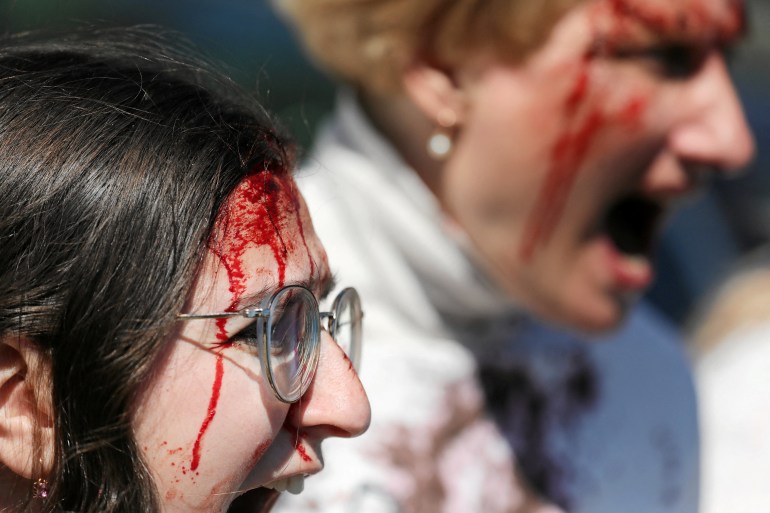Russian forces continued to exploit a window of opportunity to make small, tactical gains during the past week, as Ukraine began to receive parcels of long-delayed US military aid for the first time in weeks.
Ukraine also reported that Russia was building up worrying numbers of troops on its northern border, and prepared to face a potential new front.
Against this tense background, Europe sought to boost Ukraine’s own defence industrial base to ensure political problems among its allies never interfere with weapons deliveries again.
Russian forces managed to steal another march on Ukrainian defenders in Ocheretyne. The village sits at the western point of a salient the Russians have gradually built west of Avdiivka after taking that city in February.
They took advantage of a poorly executed substitution of Ukraine’s defending battalion to enter Ocheretyne in late April, but faced fierce resistance.
Russia’s defence ministry announced Ocheretyne had fallen on May 5, Orthodox Easter Sunday.
Satellite imagery appeared to confirm that, and three days later Russian forces consolidated their catch by advancing four kilometres (2.5 miles) north of the village and extending their gains to its south.
National Guard captain Volodymyr Cherniak told The Guardian the Russian forces did this by flanking defences the Ukrainians had taken too long to dig because they lacked construction crews.
Russian forces made marginal gains as they fought street-to-street in Robotyne, a small town in western Zaporizhia that Ukrainian forces recaptured in last year’s counteroffensive. And on Monday, they swallowed Novoselivske, a village in Luhansk.
Sergei Shoigu, Russia’s defence minister, claimed during a conference call with Moscow’s military leadership that their forces had seized 547sq kms (211sq miles) of territory in Ukraine since the beginning of the year.
The Institute for the Study of War, a Washington-based think tank, put the figure at 519sq km (200sq miles).
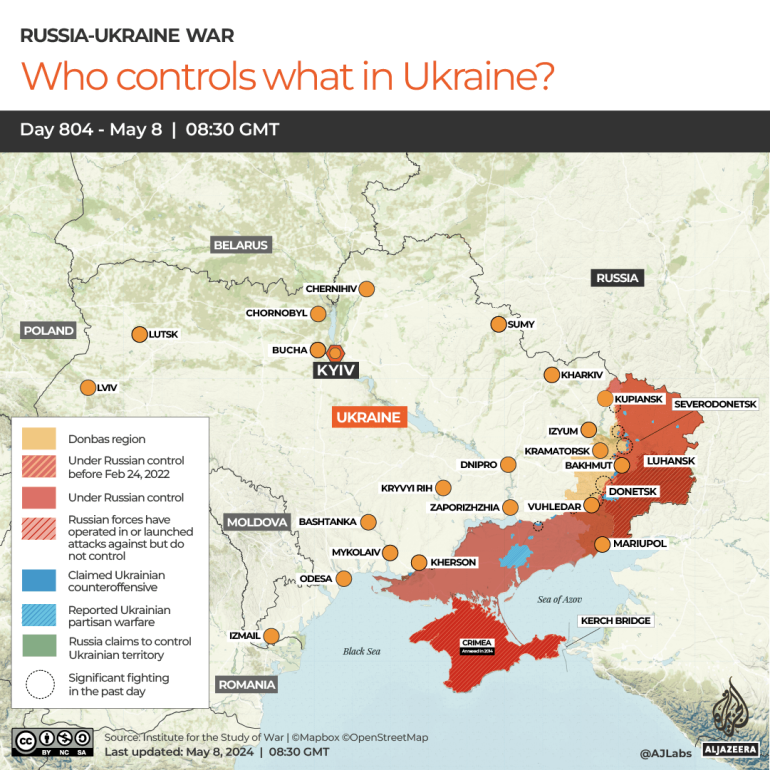
But Russian tactical failures were notable.
Throughout the week, they tried and failed to recapture Nestryga, an island in the Dnipro Delta from which they had harassed Ukrainian forces on the right bank, and which Ukraine managed to take back on April 28.
Southern forces spokesperson Dmytro Pletenchuk told a telethon there were several assaults a day.
“The occupiers have a big obstacle – it is the Dnipro, and in order to overcome it, they are forced to use watercraft … but at the moment they are in an open area and therefore, it is quite difficult for them and they are suffering losses,” Pletenchuk said.
A Ukrainian bridgehead on the left bank that has forced back Russian artillery even managed to expand its position around Krynky by Monday. Here, too, relentless Russian assaults since the beginning of the year have failed to dislodge the garrison.
Russian forces also failed to capture the strategically important town of Chasiv Yar in the east – a prize Russian President Vladimir Putin reportedly wanted by May 9, the anniversary of Nazi Germany’s capitulation 79 years ago.
More ominously, Ukrainian deputy military intelligence chief Vadym Skibitsky said Russia was possibly preparing to make a renewed attempt to capture Sumy and Kharkiv, two northern cities it failed to take in February 2022 along with Kyiv.
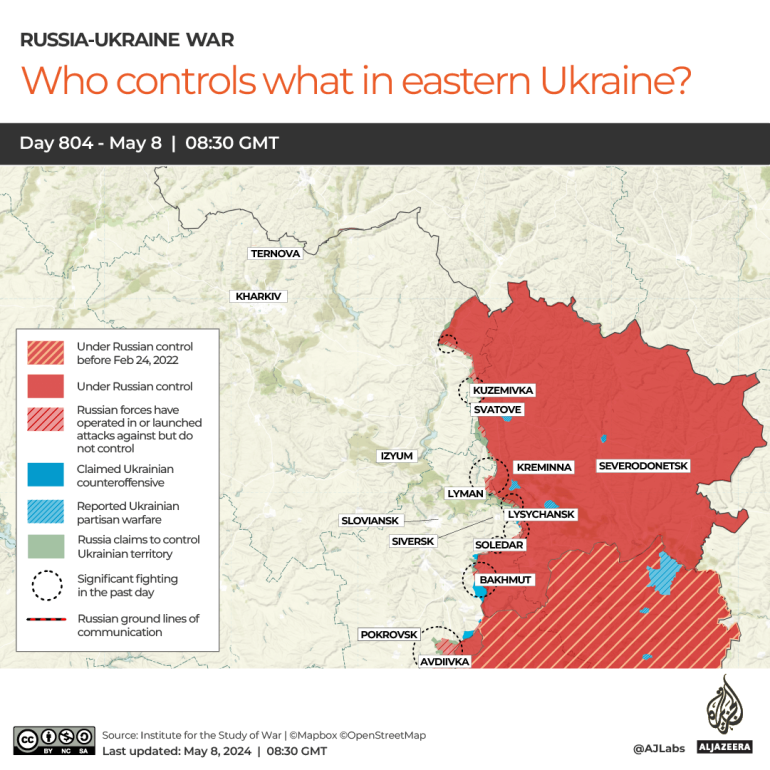
He told The Economist that Russia had concentrated 35,000 troops north of the Ukrainian border in these areas, and would launch them into Ukraine by late May or early June. Ukrainian military observer Kostyantyn Mashovets estimated the number was closer to 50,000.
Ukrainian parliamentarians have told Al Jazeera that Ukraine maintains tens of thousands of troops in the north of the country, far from the active battlefronts, precisely for such an eventuality. During the war, Russian troops based in Belarus have made various feints at a buildup, possibly as a distraction. It now appears Ukraine is taking the threat seriously.
Commander-in-Chief Oleksandr Syrskyii recently said he was sending more artillery and tanks sorely needed on active fronts to bolster northern forces.
But what about the weapons?
Ukrainian officials have repeatedly said that they need more Western-supplied weapons to hold out and ultimately push Russia off Ukrainian soil.
US President Joe Biden signed into law a supplemental spending bill on April 24, after Congress took six months to approve it, but there has been disagreement on how long a billion dollars’ worth of weapons readied for delivery took to reach Ukraine.
Pentagon spokesperson Sabrina Singh said deliveries have reached Ukraine “sometimes within hours if not a day or two”.
But on Friday, six days after Biden signed the bill, Ukrainian President Volodymyr Zelenskyy said, “We are waiting for the weapons to arrive in Ukraine.”
Somewhat inscrutably, the New York Times said a first batch of antitank rockets, missiles and 155mm artillery rounds had arrived in Ukraine in the interim, on April 28.
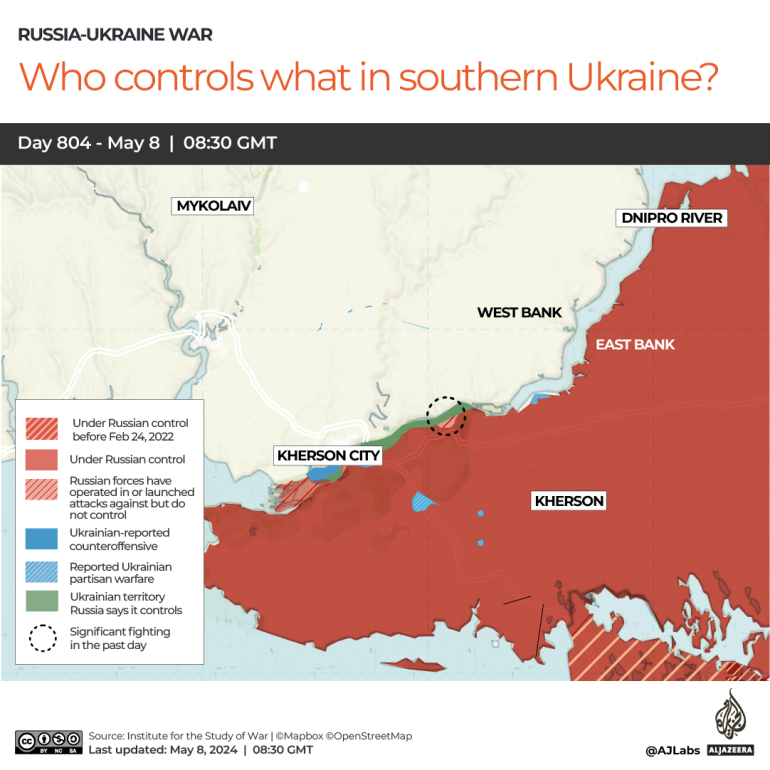
Ukraine’s European allies have continued to send in weapons during the US hold-up, but they have not been sufficient to maintain even defensive operations because Europe’s defence industrial base has shrunk since the Cold War.
Ukraine embarked on a strategy of building up its own industrial base last December, and invited Western investors to speed up that process.
The European Union’s foreign policy chief, Josep Borrell, sought to do so on Monday, when he brought together 350 Ukrainian and European industry representatives and government officials to foster partnerships backed by EU money.
“Ukraine is a country at war, it does not produce under normal conditions,” said Borrell. “That is why industry representatives must understand that, firstly, these are new opportunities, secondly, that there is a risk, and thirdly, that there is financing.”
Ukrainian Foreign Minister Dmytro Kuleba called for a common European defence industrial space to remove redundancies and competing weapons systems, and for long-term industry contracts and planning of European defence.
“If we want to preserve peace in Europe, we must move to a European wartime economy and industry,” he told the forum virtually. “Only in this way can we restrain Russia’s aggression – by demonstrating that Europe has the means for self-defence.”
The Russian threat dawns on Europe
Kuleba was not the only one calling for an economic and political gear shift.
French President Emmanuel Macron told The Economist on Friday that Europe was facing a triple threat from Russia.
“It’s this triple existential risk for our Europe: a military and security risk; an economic risk for our prosperity; an existential risk of internal incoherence and disruption to the functioning of our democracies.”
Macron had struck this chord in a speech to the Sorbonne a week earlier.
“Our Europe today is mortal,” Macron had said. “It can die and that depends solely on our choices.”
Europe was not armed to defend itself when “confronted by a power like Russia that has no inhibitions, no limits”, Macron said. “Europe must become capable of defending its interests, with its allies by our side whenever they are willing, and alone if necessary.”
Macron also reiterated the possibility of sending French troops to Ukraine speaking to the Economist, saying it could happen if Russia had a breakthrough and Ukraine requested it. Kremlin spokesman Dmitry Peskov said the statement was “very important and very dangerous”.
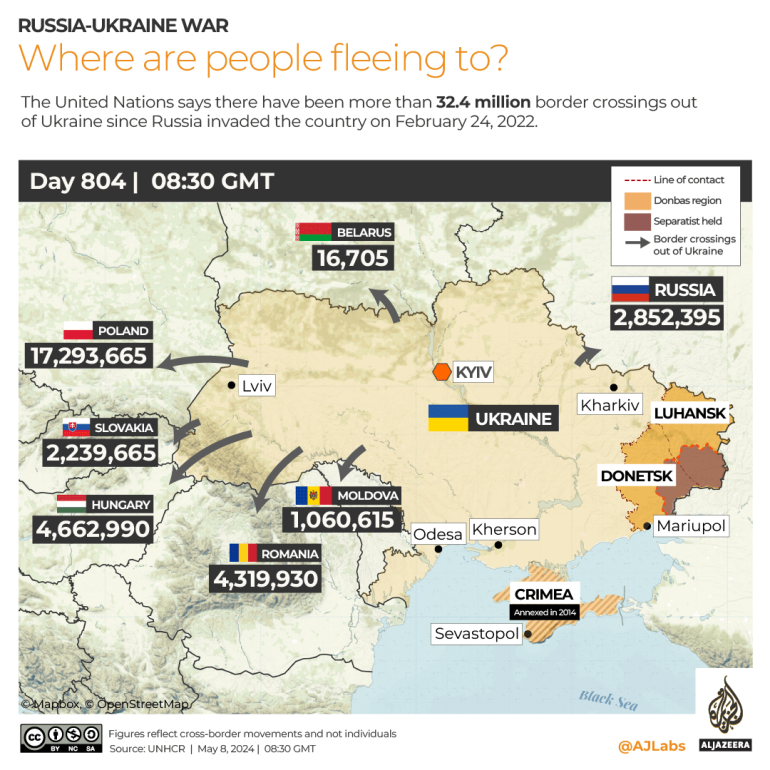
Ukraine’s deputy military intelligence chief agreed that Europe was not ready to defend itself.
Vadym Skibitsky told Newsweek Russia could overrun the Baltic states in a week, whereas it would take NATO at least 10 days to begin the process of coming to their aid.
From NATO’s perspective, the need to help Ukraine has been growing along with the Russian threat perception in the rest of Europe.
Four months after Russia’s 2022 invasion of Ukraine, NATO said it would create a standing force of 300,000 troops to defend its eastern borders, up from about 80,000 today. In January, a series of NATO defence chiefs sharing similar intelligence said the alliance should prepare for a potential Russian invasion of NATO soil in as little as five to eight years’ time.
On May 2, NATO’s political decision-making body, the Atlantic Council, said NATO allies are “deeply concerned about recent malign activities on Allied territory”.
Secretary-General Jens Stoltenberg said a Russian campaign of hybrid activities including misinformation, espionage and sabotage was already under way in Europe.
The Financial Times on Sunday quoted European intelligence officials saying Russia was preparing “covert bombings, arson attacks, and damage to infrastructure” in Europe.
